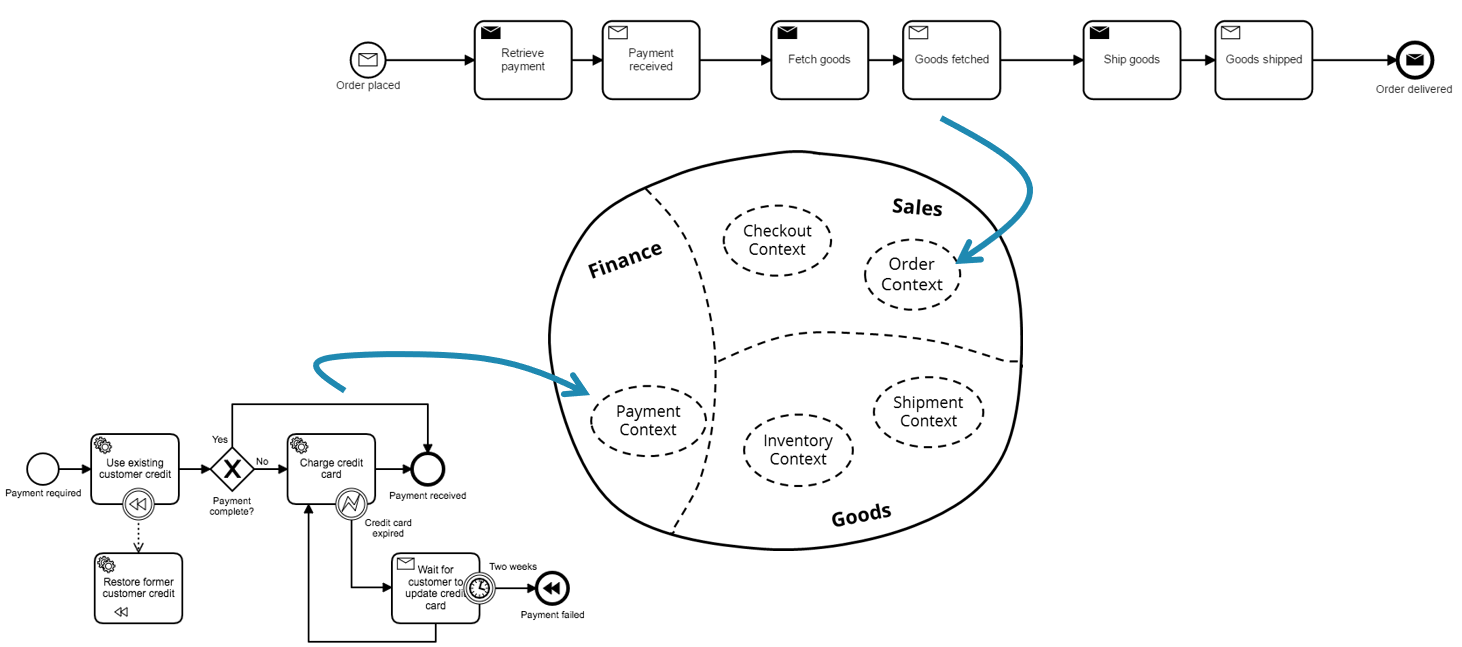This sample application demonstrates a simple order fulfillment system, decomposed into multiple independent components (like microservices).
To run the Choreography-based version of the Flowing Retail project for lab04 you first need to be sure that all the relevant projects have been built at least once:
$ cd .\kafka\java\
$ mvn
Then you can execute:
$ docker-compose -f docker-compose-kafka-java-choreography.yml up --build
from the directory runner/docker-compose.
To run the Camunda-based version of the Flowing Retail project for lab07 you need to execute:
$ docker-compose -f docker-compose-kafka-java-order-camunda.yml up
from the directory runner/docker-compose.
To run the Zeebe-based version of the Flowing retail project for lab11 you need to execute:
$ docker-compose -f docker-compose-kafka-java-order-zeebe.yml up
from the directory runner/docker-compose. This uses the order-zeebe project for handling the order workflow. Hint: If you want to use the local Zeebe services you need to have the ''Self-managed local Zeebe'' configuration active in your application.properties file. If you want to use the hosted Camunda Cloud configuration you need to configure your Camunda Cloud credentials here.
The rest of this README file is the original one provided by Bernd Rücker.
The repository contains code for multiple implementation alternatives to allow a broad audience to understand the code and to compare alternatives. The table below lists these alternatives.
The example respects learnings from Domain Driven Design (DDD), Event Driven Architecture (EDA) and Microservices (µS) and is designed to give you hands-on access to these topics.
Note: The code was written in order to be explained. Hence, I favored simplified code or copy & paste over production-ready code with generic solutions. Don't consider the coding style best practice! It is purpose-written to be easily explainable code.
You can find more information on the concepts in the Practical Process Automation book with O'Reilly.
Flowing retail simulates a very easy order fulfillment system:
The most fundamental choice is to select the communication mechanism:
- Apache Kafka as event bus (could be easily changed to messaging, e.g. RabbitMQ):
- REST communication between Services.
- This example also shows how to do stateful resilience patterns like stateful retries leveraging a workflow engine.
- Zeebe broker doing work distribution.
After the communication mechanism, the next choice is the workflow engine:
- Camunda Platform
- Zeebe as managed service on Camunda Cloud
and the programming language:
- Java
- Go
- JavaScript / TypeScript
Flowing retail simulates a very easy order fulfillment system. The business logic is separated into the services shown above (shown as a context map).
Some services are long running in nature - for example: the payment service asks customers to update expired credit cards. A workflow engine is used to persist and control these long running interactions.
Note that the state machine (or workflow engine in this case) is a library used within one service. If different services need a workflow engine they can run whatever engine they want. This way it is an autonomous team decision if they want to use a framework, and which one:
- Practical Process Automation book
- Introduction blog post: https://blog.bernd-ruecker.com/flowing-retail-demonstrating-aspects-of-microservices-events-and-their-flow-with-concrete-source-7f3abdd40e53
- InfoQ-Writeup "Events, Flows and Long-Running Services: A Modern Approach to Workflow Automation": https://www.infoq.com/articles/events-workflow-automation
